Over the past few days I have been in California covering my first launch from Vandenberg Air Force Base (VAFB) for SpaceflightNow. I had been looking forward to this trip some time and there were many unknowns going into it. Vandenberg is particularly famous for its low-lying cloud level which is similar to a thick fog. around the launch complex. During the winter months there is a lesser chance of the clouds covering the base, but it still requires some luck. Thankfully, a pressure system kept the clouds over the ocean and away from the coast for this trip.
The payload for this launch was NASA’s Landsat Data Continuity Mission (LDCM), which would launch on top of a United Launch Alliance Atlas V rocket in the 401 configuration, meaning that is has no solid rocket boosters. LDCM, which was built by Orbital Sciences Corporation, allows scientists to gather valuable data and imagery which helps monitor changes on the earths surface. LDCM is particularly valuable to farmers who want to view crop trends.
I arrived at Vandenberg on Thursday ahead of a Friday press conference. I wont bore you with those images! Following the press conference I was able to get a little railfanning in at Jalama Beach.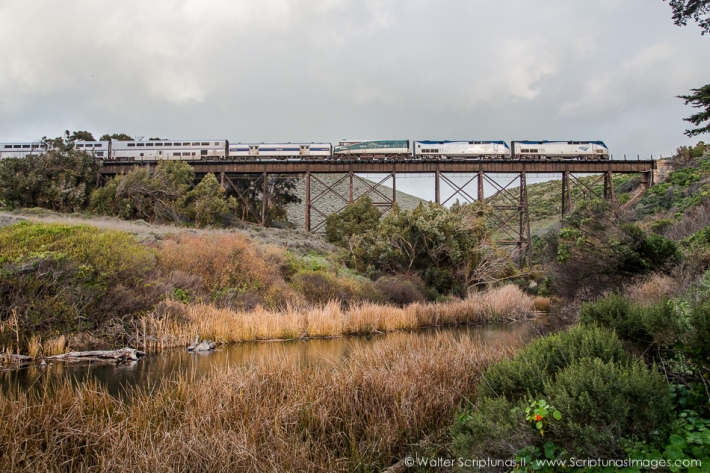 Amtrak’s Coast Starlight rolls across a trestle at Jalama Beach.
Amtrak’s Coast Starlight rolls across a trestle at Jalama Beach.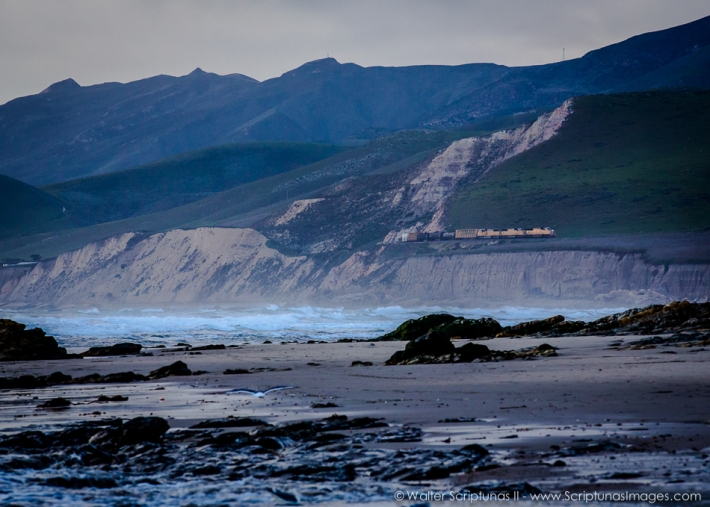 A short Union Pacific freight train rolls down the coast at Jalama Beach, CA.
A short Union Pacific freight train rolls down the coast at Jalama Beach, CA.
Saturday was a free day which allowed me to explore the area. I visited some nearby sand dunes and checked out another great railfanning spot at Gaviota Beach.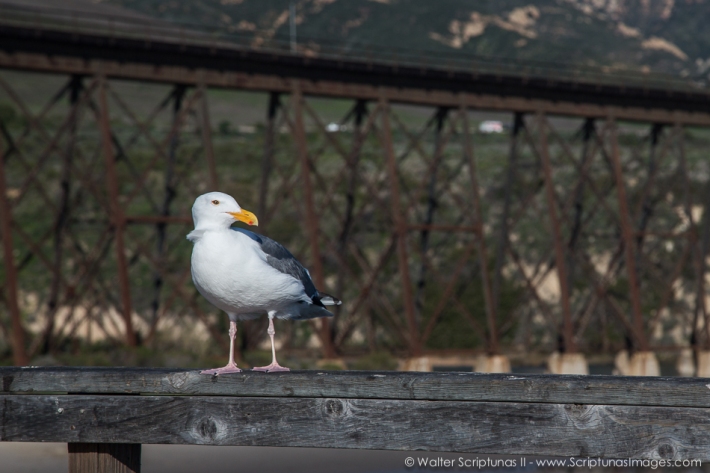
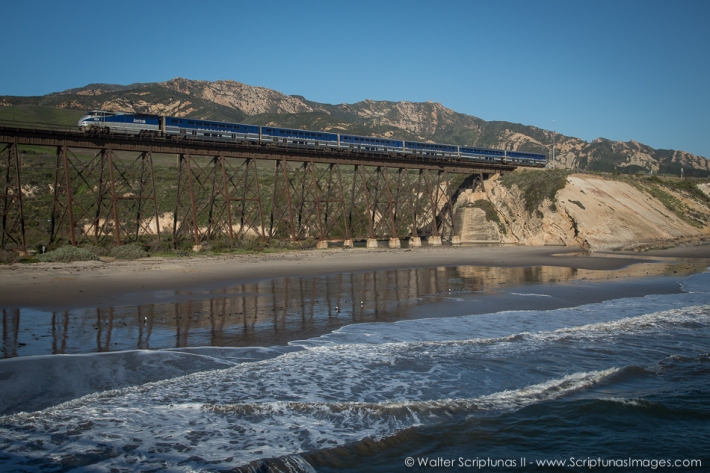 A southbound Amtrak Surfliner crosses the trestle at Gaviota, Ca.
A southbound Amtrak Surfliner crosses the trestle at Gaviota, Ca.
Sunday would be much busier as it was time to set up remote cameras around the pad for Monday mornings launch. There is a very small group of media who set up at Vandenburg and were are all good friends, so it makes set up a lot of fun. For this launch I would use three sound triggers, two from T-Minus Productions as well as a Triggertrap which I would be using for the first time. While I had tested the Triggertrap over a period of a couple weeks leading up to launch that still does not compare to real world experience.
I set up in three different locations, with four cameras consisting of a Canon 30D, two 40D’s and a 7D. I was leery of using the 30D for a remote, but having tested if over several days everything checked out and I felt that was acceptable to use. More on that later…
My friend, and veteran rocket photographer, Bill Hartenstein, loaned me three tripods to use for remotes since all of my tripods are in Florida and it would have been quite costly to take them all the way to CA! You can check out his photography here.
The first setup location was on a hill at a tracking camera site .7 miles southwest of the launch complex. With the favorable weather predicted this shot was a must considering that the last clear launch view from this spot occurred in 1999!
I would rely on my new Triggertrap to capture the action at this location with the 7D and 24-105L.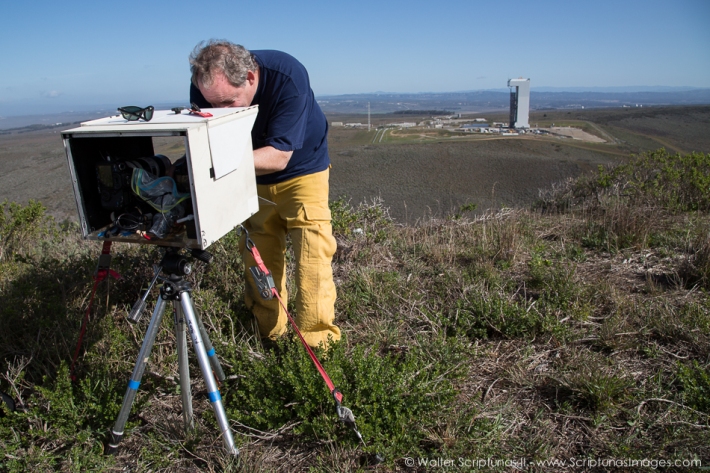 Bill Hartenstein sets up a remote camera box.
Bill Hartenstein sets up a remote camera box.
After I finished setting up my remote I noticed a slightly better angle about 50 ft away with a nicer foreground. Luckily my setup was pretty easy to move so I did.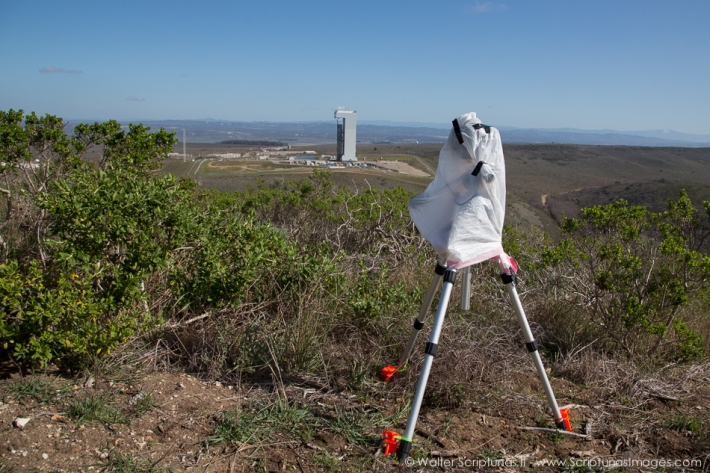
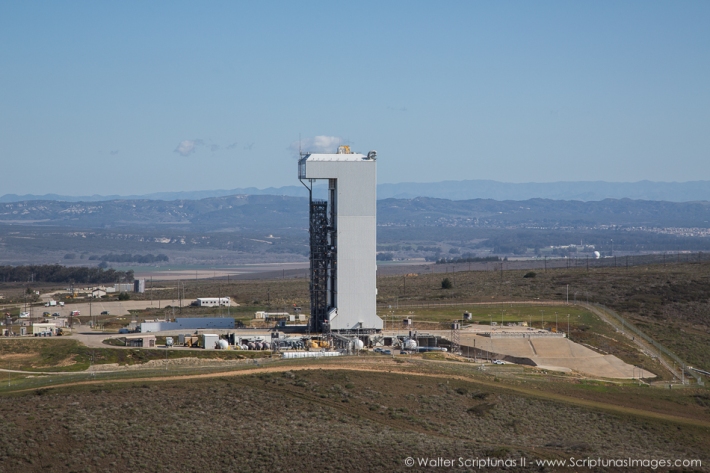
Overhead view of SLC-3.
The second location I set up at was inside the pad perimeter behind the Mobile Service Tower around 650ft from the rocket. I used my Canon 30D and 10-22 at this spot.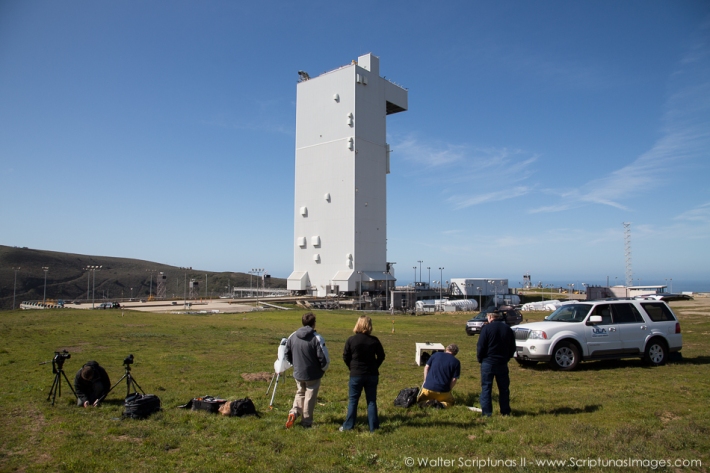 My third and final location was at a risky spot on the backside of the pad near the flame trench. At this location, only 150ft away from the rocket my camera was guaranteed to get hit by the blast, so like most smart photographers, I would set up two cameras here! I found some nice ice-plants which provided a nice foreground for my wide-angle setup. To get the low angle I would use a super clamp to get my camera as low to the ground as possible. The tripod was held down with 4 stakes tied to the legs of the tripod with zip-ties. I was still a bit worried that the setup could fall over due to the soft sand, but it was the best I could do.
My third and final location was at a risky spot on the backside of the pad near the flame trench. At this location, only 150ft away from the rocket my camera was guaranteed to get hit by the blast, so like most smart photographers, I would set up two cameras here! I found some nice ice-plants which provided a nice foreground for my wide-angle setup. To get the low angle I would use a super clamp to get my camera as low to the ground as possible. The tripod was held down with 4 stakes tied to the legs of the tripod with zip-ties. I was still a bit worried that the setup could fall over due to the soft sand, but it was the best I could do.
The second camera at this spot was a 40D and Sigma 10-20 loaned to me by SpaceflightNow Editor Justin Ray for the launch.
Camera setup ended up taking over 4 ½ hours.
Following a half hour wait after setup I would once again head out to the pad to photography a press conference with NASA Administrator Charlie Bolden back dropped by the rocket.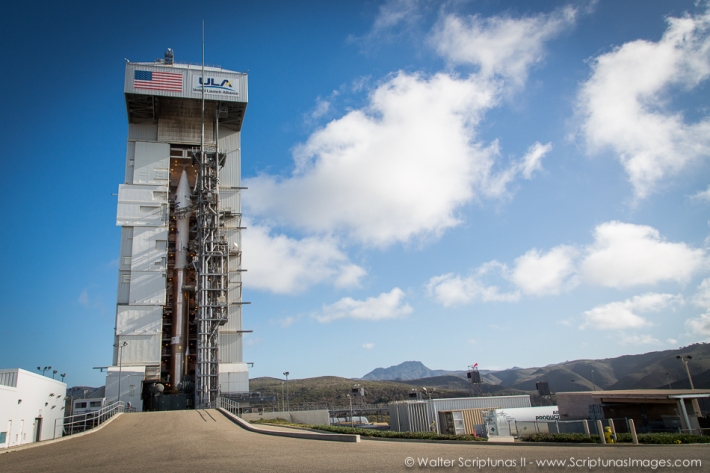
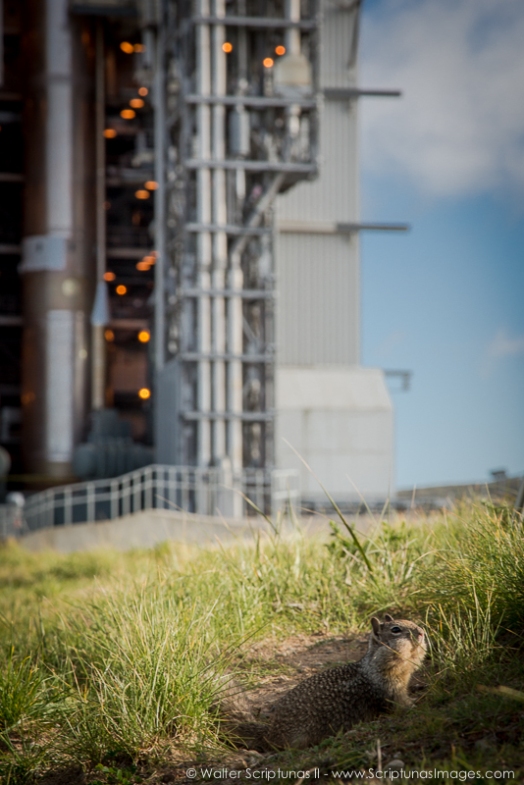
A ground squirrel emerges from its hole to check out the United Launch Alliance Atlas V rocket.
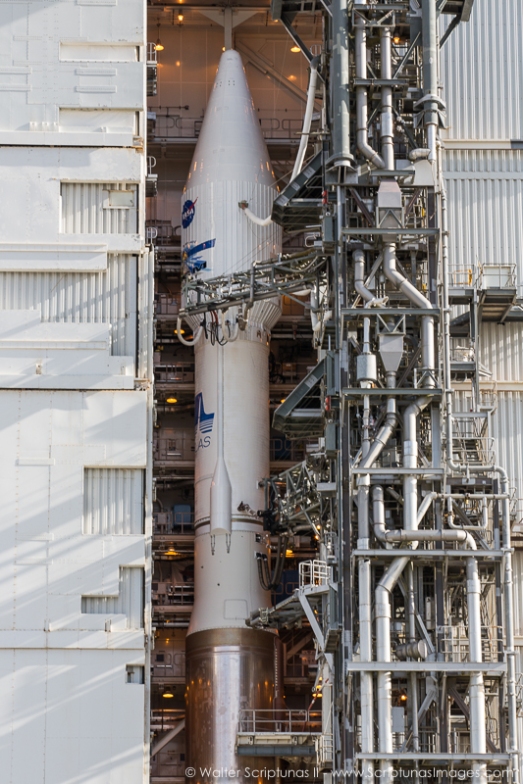
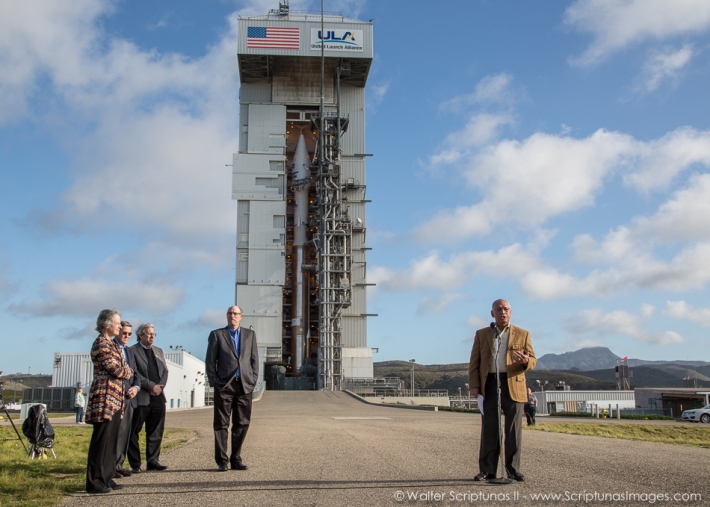 Now on to launch day. We had scoped out a spot to watch the launch along a road just 2.6 miles away from the pad. Many locals and others showed up to watch the launch from the great spot. Although the pad was partially obstructed, it still beat the press site, which was 4.6 miles away.
Now on to launch day. We had scoped out a spot to watch the launch along a road just 2.6 miles away from the pad. Many locals and others showed up to watch the launch from the great spot. Although the pad was partially obstructed, it still beat the press site, which was 4.6 miles away.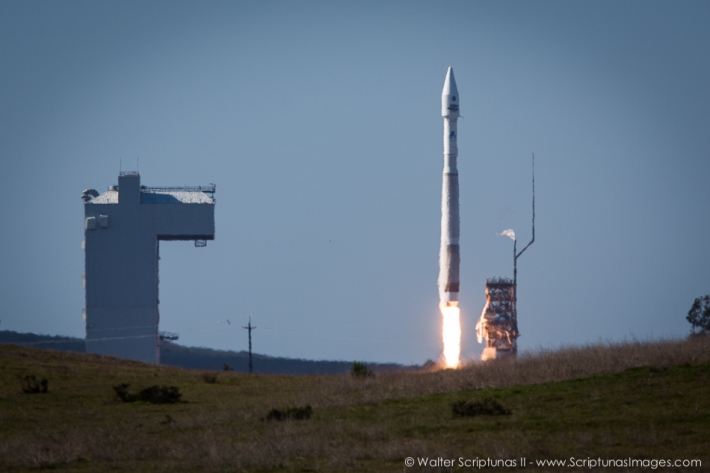 The United Launch Alliances Atlas V rocket emerges from behind a hill.
The United Launch Alliances Atlas V rocket emerges from behind a hill.
The countdown was flawless and we were all treated to an amazing show. The sound of main engine ignition was incredible.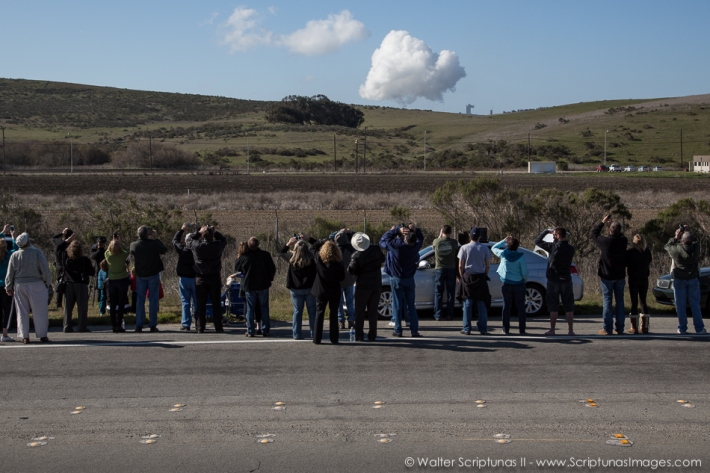
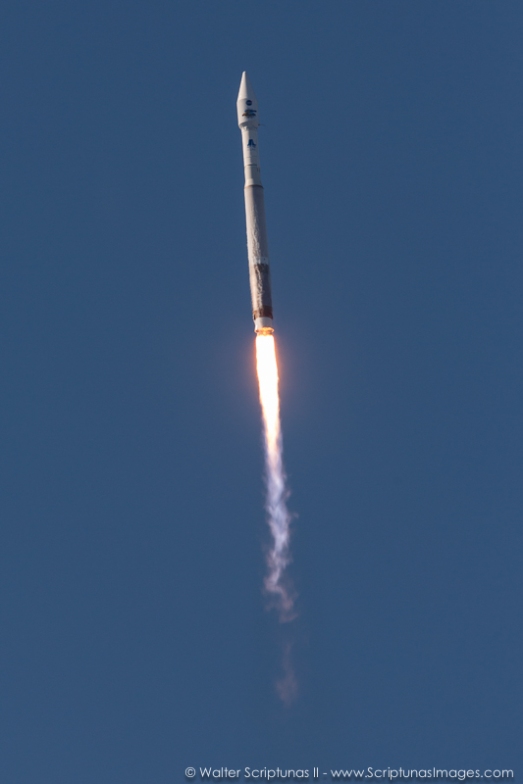
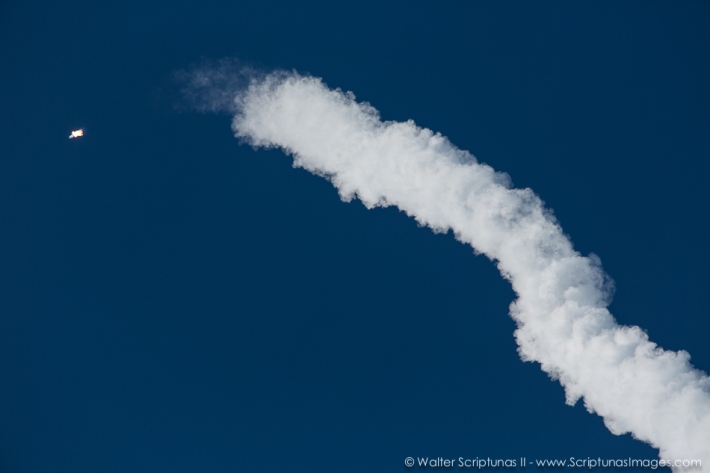 Around 45 minutes after launch we headed out to the launch complex to retrieve our remote cameras. Since the pad was not open yet, we decided to go up onto the hill to retrieve those remotes first.
Around 45 minutes after launch we headed out to the launch complex to retrieve our remote cameras. Since the pad was not open yet, we decided to go up onto the hill to retrieve those remotes first.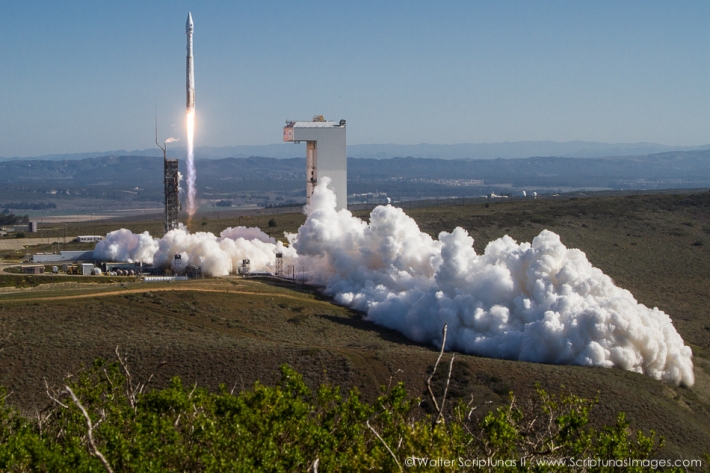
Just as expected, the hill provided a great view of the launch!
After picking up that remote it was time to head into the pad. The first camera I came to was my 30D and 10-22. The camera was dead. Believe me, you never get used to this feeling and it was extremely disappointing. After two unknown failures of this camera it is safe to say that it is now retired from the launch business. Luckily, I still had two more cameras to redeem myself.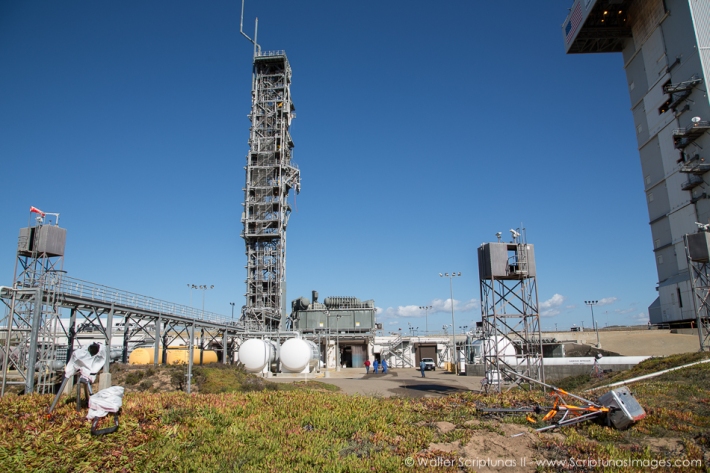 I had been worried that the strong blast could knock over my camera, but as you can see, all was fine other than the usual dirt and grime covering the lens. The setup to my right wasn’t quite as lucky.
I had been worried that the strong blast could knock over my camera, but as you can see, all was fine other than the usual dirt and grime covering the lens. The setup to my right wasn’t quite as lucky.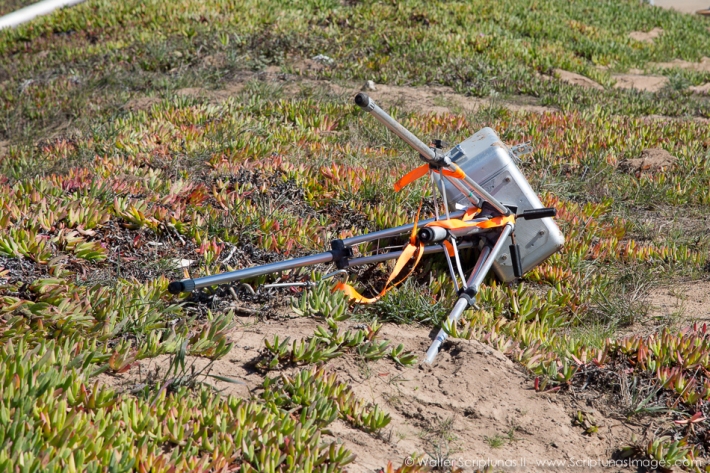 It was now time to check the cameras to see if they had fired correctly.
It was now time to check the cameras to see if they had fired correctly.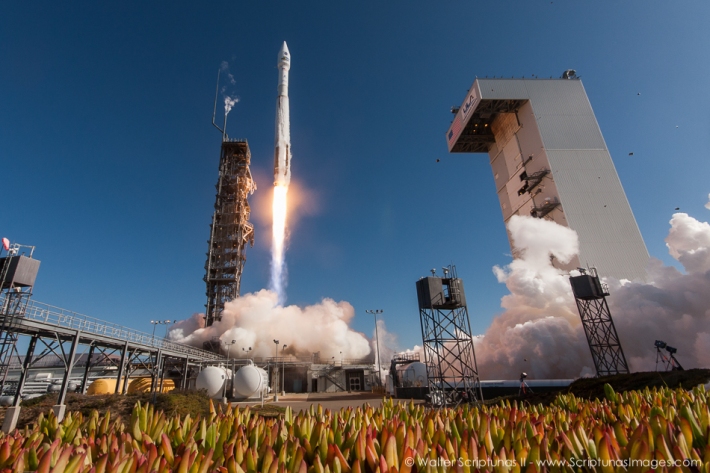 Success!
Success!
Other than a little dew on the lens, this camera was also a success!
Overall it was great to experience Vandenberg Air Force Base for the first time. The facility was great as well as all of our escorts throughout the week. I look forward to making it back again soon.
Most of the photos seen in this blog can be purchased here.
I recently created a Facebook page devoted to my photography where you can stay up to date on recent shoots. Be sure to “like” the page so that you can stay up to date on what is going on!
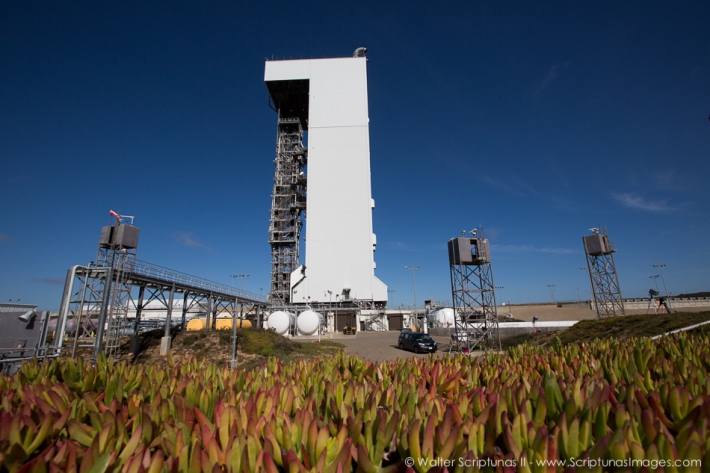
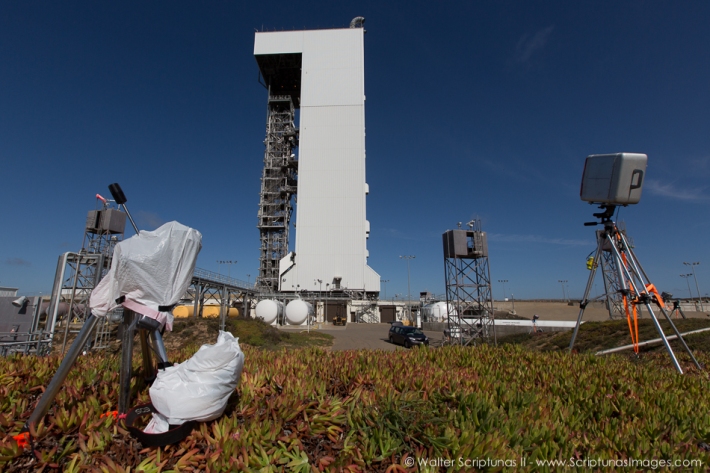
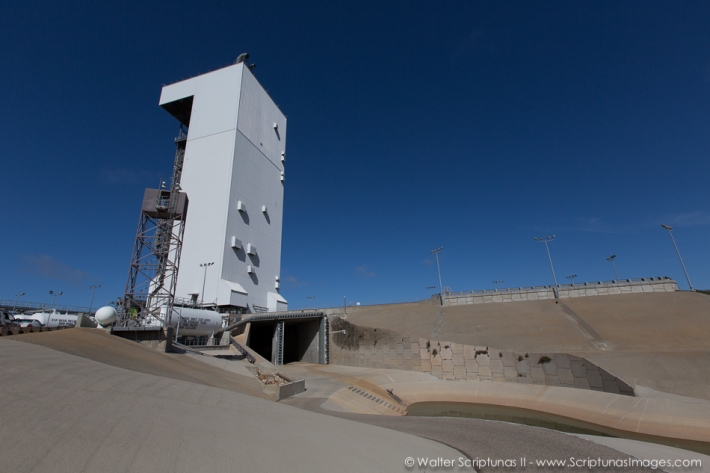
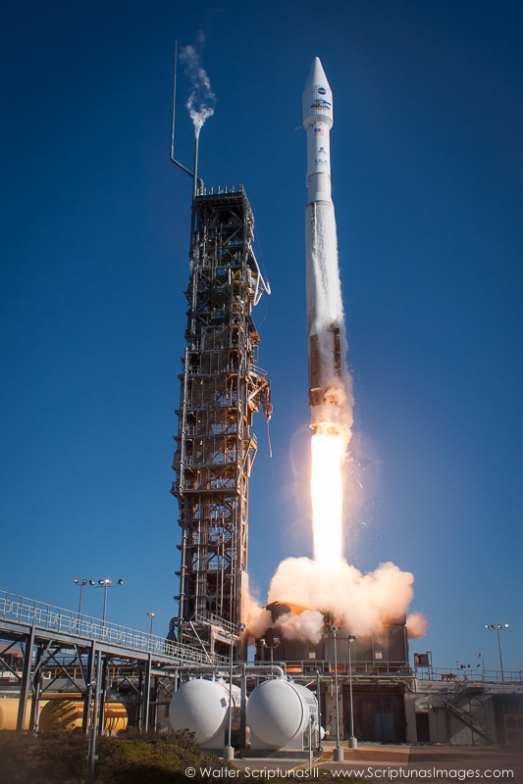
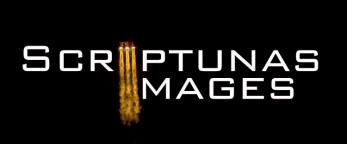
Great work! Thanks for sharing!
Amazing photos of an exciting launch! (I watched on TV!)
Those are great photos. I can’t imagine the feeling of finding that dead camera.
I have one technical question. I assume that each camera is powered by an external pack of some sorts and when you set them up you just leave them on and use the TriggerTrap or the other devices to start shooting?
Both the trigger and camera go into sleep mode after I leave them, so they are capable of being outside for a few days on their own battery power before the batteries need to be replaced. The sound of the rocket wakes up both the trigger and camera. Thanks!